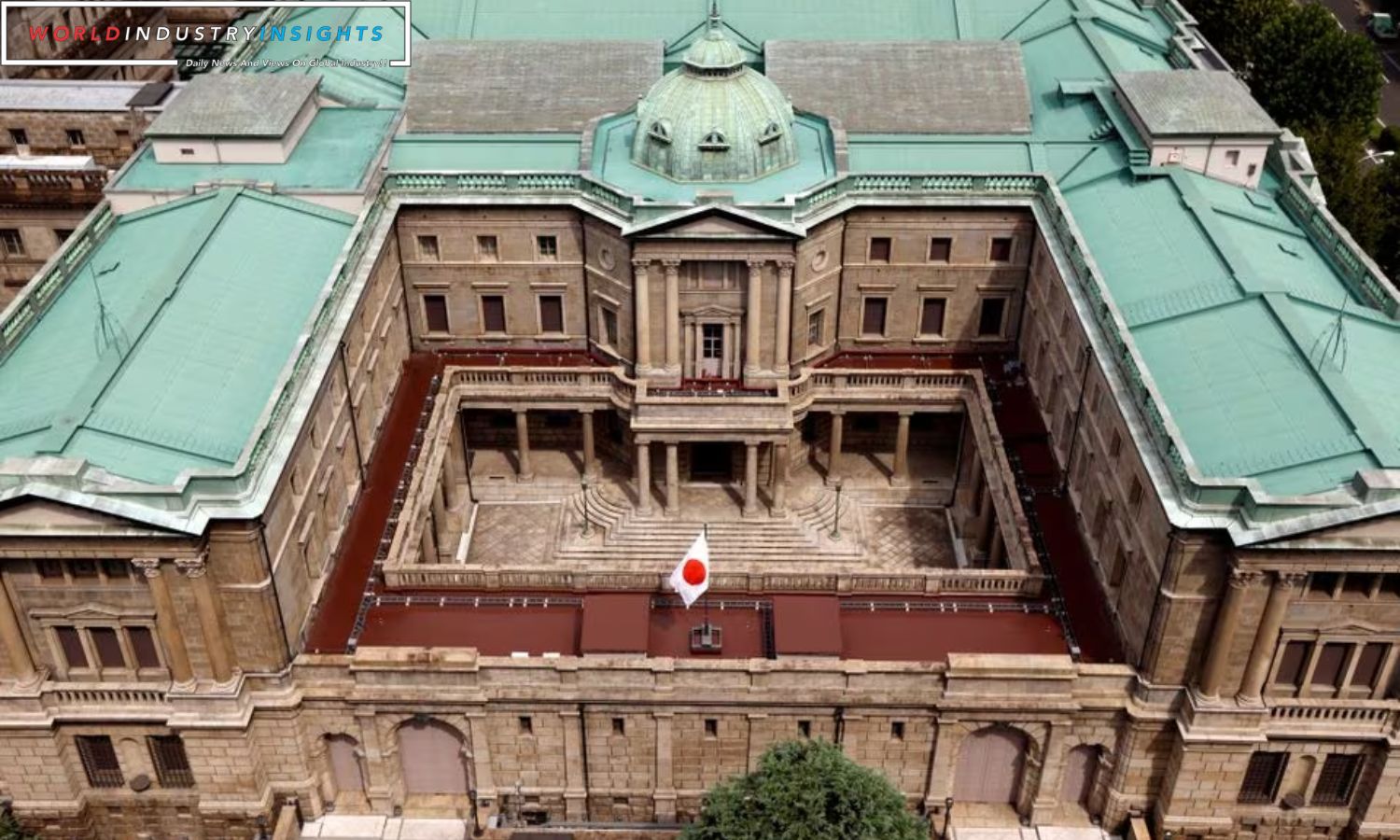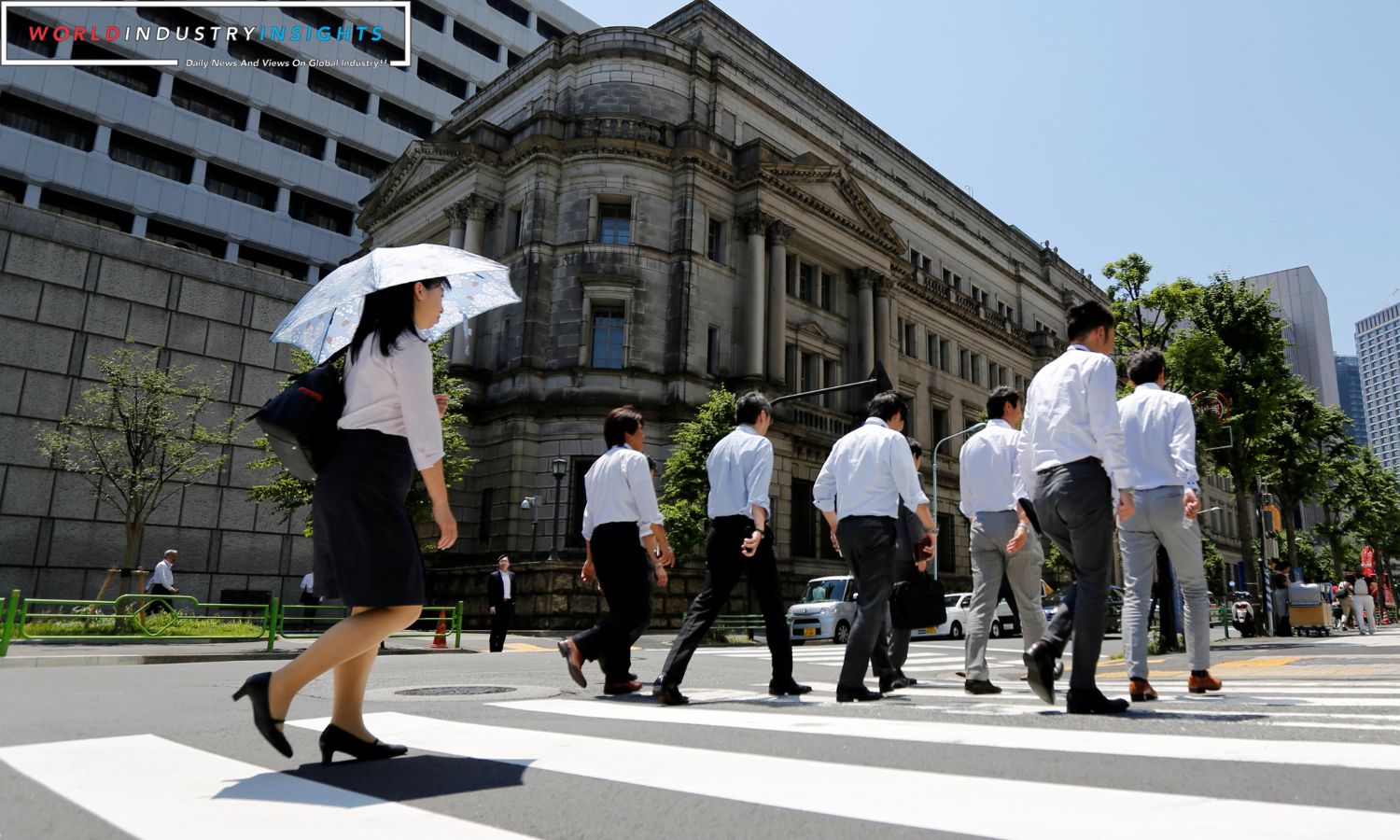Japan Inflation Hits Record High: In a significant development highlighting the mounting inflationary pressures in Japan, a key measure of the country’s trend inflation surged to a record high of 2.2% in October. This notable increase in the weighted median inflation rate, a crucial indicator gauging the broadening spectrum of price pressures, surpassed the 2.0% gain witnessed in September. This surge stands as the most rapid rise in inflation since comparable data became available in 2001, according to data from the Bank of Japan (BOJ). The intensification of inflation further accentuates the case for the BOJ to consider scaling back its massive monetary stimulus.
Despite the global trend of major central banks raising interest rates to counteract inflation, the BOJ remains a dovish outlier, maintaining its ultra-loose policy stance. This stance persists even as core consumer inflation has consistently exceeded the bank’s target for over a year. The BOJ has steadfastly pledged to sustain super-low interest rates until achieving its 2% inflation target in a sustained manner, supported by robust consumption and wage increases.
The upcoming policy-setting meeting of the BOJ on December 18-19 will likely scrutinize this latest data closely. While there are positive signs in terms of wage increases and inflation, BOJ Governor Kazuo Ueda expressed caution, highlighting the high level of uncertainty surrounding the strength of this economic cycle.
Also Read: Japan Inflation Puzzle: Will Stubborn Price Pressures Force BOJs Hand?
This increase in the weighted median inflation rate is a significant development, reflecting the inflation rate of items at the middle of the price changes, approximately around the 50th percentile point of the distribution. Unlike the consumer price index (CPI), which can be influenced by fuel and energy costs, the weighted median inflation rate offers a more insightful perspective on how broadly prices are rising.
As this economic landscape unfolds, the data on inflationary pressures adds another layer of complexity to the ongoing policy discussions at the BOJ. It also raises questions about the global economic context, where central banks are navigating the delicate balance between fostering economic recovery and taming inflationary pressures.
Our Reader’s Queries
What is the highest inflation rate in Japan?
Japan’s inflation rate dropped to 2.80 percent in November, down from 3.30 percent in October 2023. This figure is in line with the country’s average inflation rate of 2.85 percent since 1958. However, Japan has experienced extreme highs and lows in inflation, with a record high of 24.90 percent in February 1974 and a record low of -2.50 percent in October 2009.
Why was inflation so high in 1974 in Japan?
While the oil crisis is often cited as the cause of the high inflation in 1973-74, it’s important to note that monetary policy mistakes made in 1972-73 had already pushed the inflation rate above 10%. This means that the oil crisis, which began in October 1973, was not the sole cause of the inflation.
What was Japan’s core inflation 40 year high?
In January, Japan’s core consumer inflation reached a new 41-year peak, with companies passing on increased costs to households. This puts the central bank in a difficult position, as it faces pressure to gradually withdraw its extensive stimulus program.
What is the 8 year high inflation rate in Japan?
The Bank of Japan is facing a critical juncture as Japan’s inflation rate has outpaced that of the US for the first time in eight years. In June 2023, headline inflation in Japan surged to 3.3% y/y, surpassing the US for the first time since October 2015. This development presents a challenge for the Bank of Japan, which must navigate the delicate balance of maintaining economic stability while addressing rising inflation.


